I have decided to start my ‘spooky’ October blogposts with a trio of ‘diabolical’ insects! I am talking specifically about Idolomantis diabolica, commonly known as the Devil’s flower mantis or giant Devil’s flower mantis, one of the world’s largest mantids. It is native to the rainforests of East Central Africa, including Ethiopia, Kenya, Malawi, Somalia, Tanzania, South Sudan, and Uganda. Idolomantis diabolica is an ambush predator of flying insects; all developmental stages are morphologically adapted to resemble surrounding vegetation. However, when confronted by a would-be predator, it has an elaborate threat display showing off a variety of bright colors. The species is popular in terraria, but from what I’ve read they be difficult to successfully breed and keep alive. Male and female mantids have different developmental stages. Males have nine (egg, seven nymphal stages, and adult) while females have ten (egg, eight nymphal stages, and adult). Today we will be looking at the first and last nymphal stages, which were produced by Bandai earlier this year as part of their Diversity of Life on Earth collection, and an adult female, which was produced by Bandai Spirits in 2021 for their Insects in the World collection. Bandai also produced adult male and female mantids in their Diversity collection, but I didn’t buy them as I was content with the Bandai Spirits adult female. This is going to be one of my more image-heavy reviews.

For starters let’s look at the L1 nymph. Being a Diversity of Life on Earth figure, assembly is required and the final product has multiple points of articulation, including the coxa-trochanter and femur-tibia junction of each middle and hind leg, the prothorax-coxa, coxa/trochanter-femur, femur-tibia, and tibia-tarsus junction of each front leg, the base of the head, and each abdominal segment. I should point out that this sculpt is not accurate for an L1 nymph. Bandai used the same sculpt for both the L1 and L8 nymphs, but technically it’s only accurate for the L8.
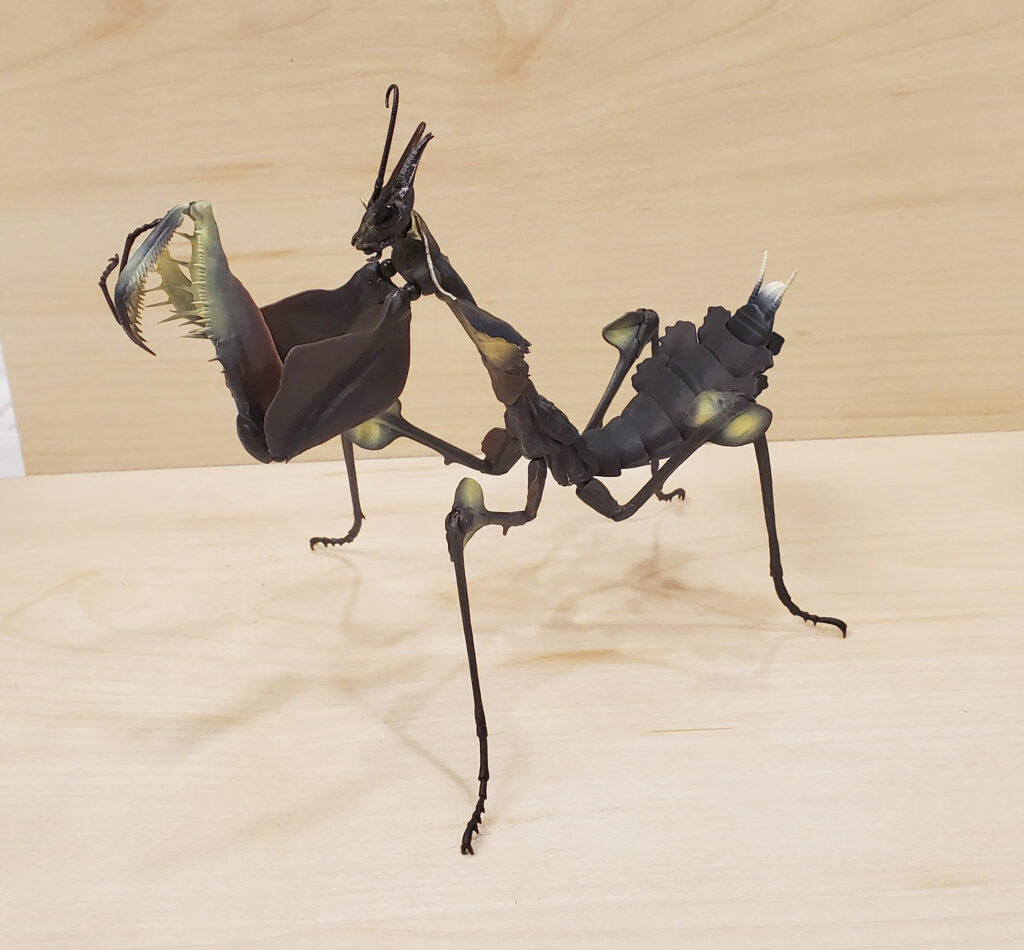
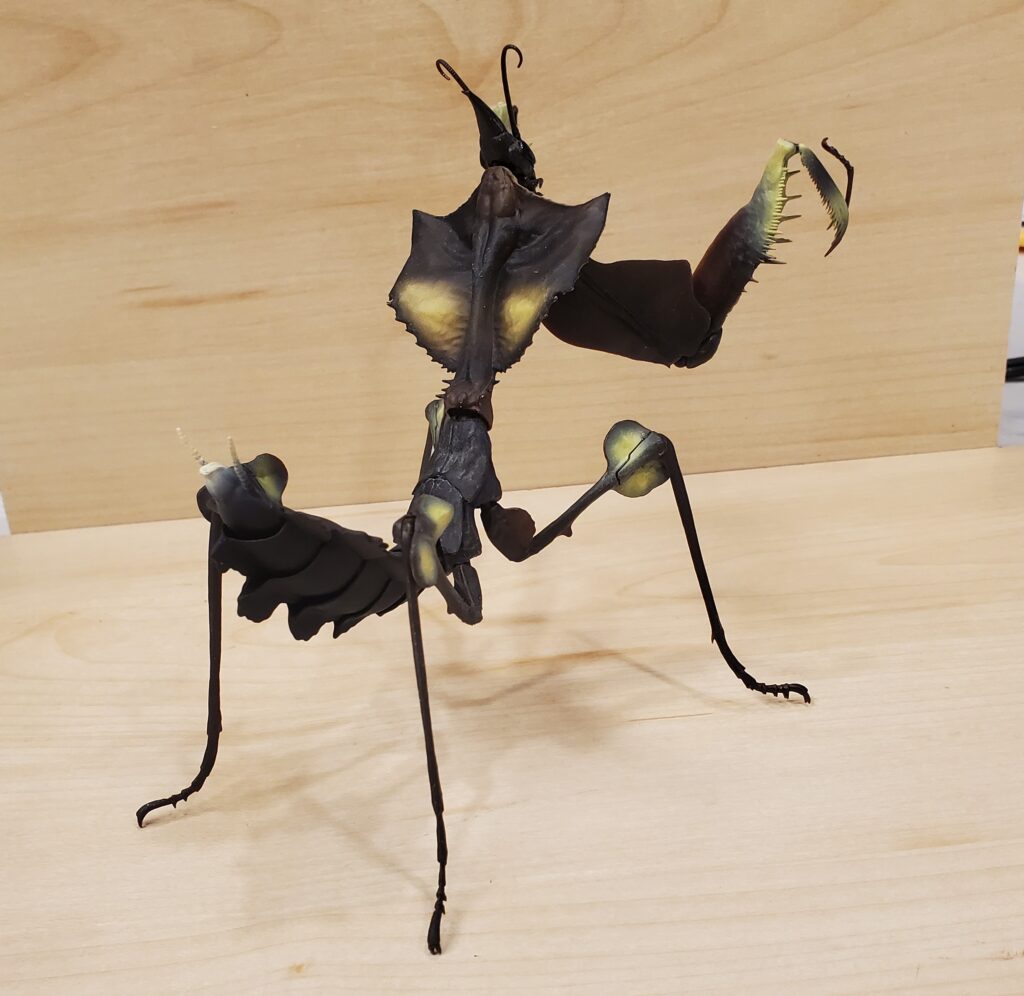
The figure can be displayed in a number of different poses, but stretched out, the body is approximately 13.5 cm. I have had trouble finding metrics for each stage, but at 13.5 cm, the scale comes to approximately 10.6:1 for a young L1.
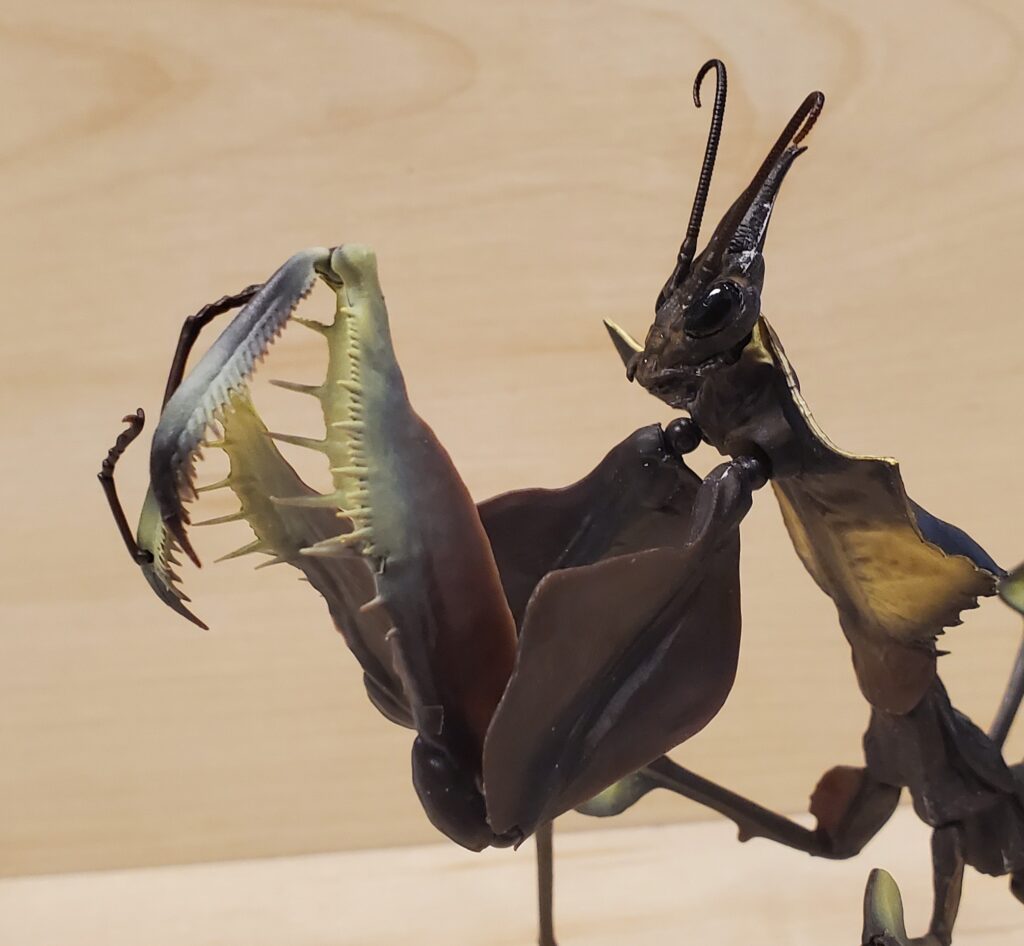
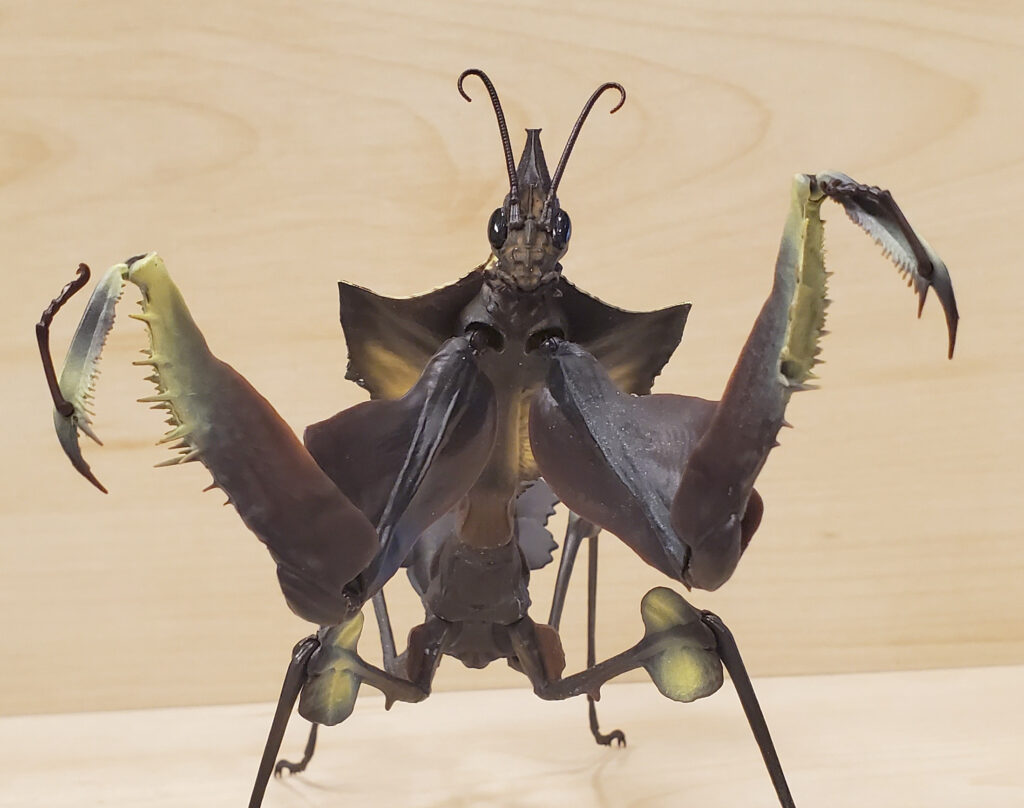

While the sculpt is not accurate for this stage, in terms of color it is accurate, as L1 nymphs of I. diabolica tend to be dark brown to black with yellow to orange highlights.
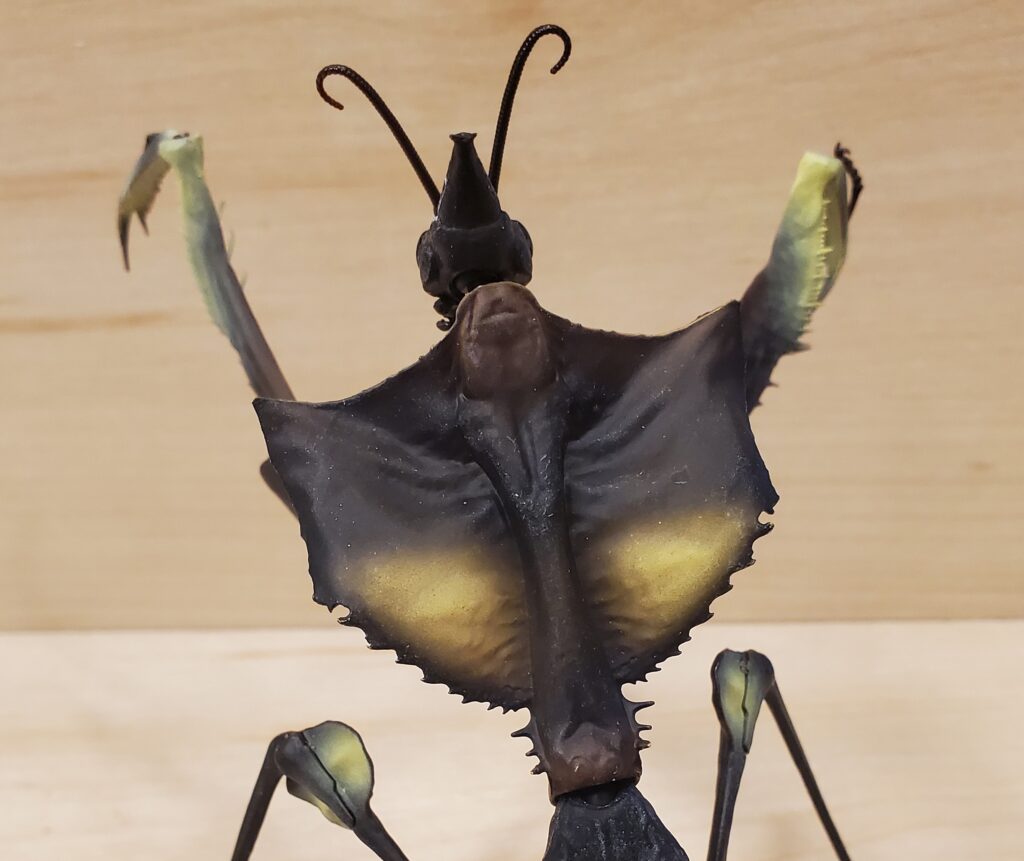

Next up is the L8 or subadult nymph. I assume this was intended to be a female, based on the morphology of the subterminal abdominal segments. I am not going to say as much about this figure, as it’s the same sculpt as the L1, so the size, assembly, and articulations are all the same. At least the sculpt is accurate for this stage, however! Two things that are different are the scale and color. Again, I had trouble finding specific metrics for this stage, but assuming it is close to adulthood, a body length of 13.5 cm would make it approximately 1.3:1-1.2:1 for a near-mature female specimen. With regards to color, it too is accurate for this stage. Late nymphs of I. diabolica tend to be a lighter tan to brown, perhaps to blend in with dead leaves or flowers.

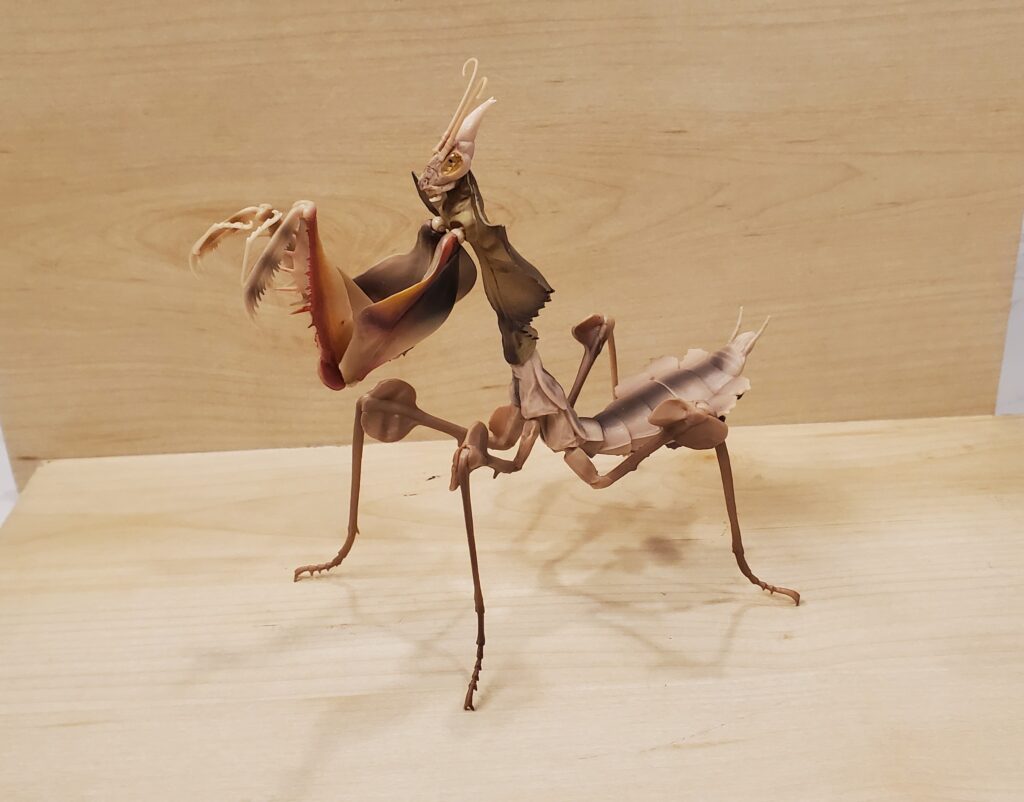
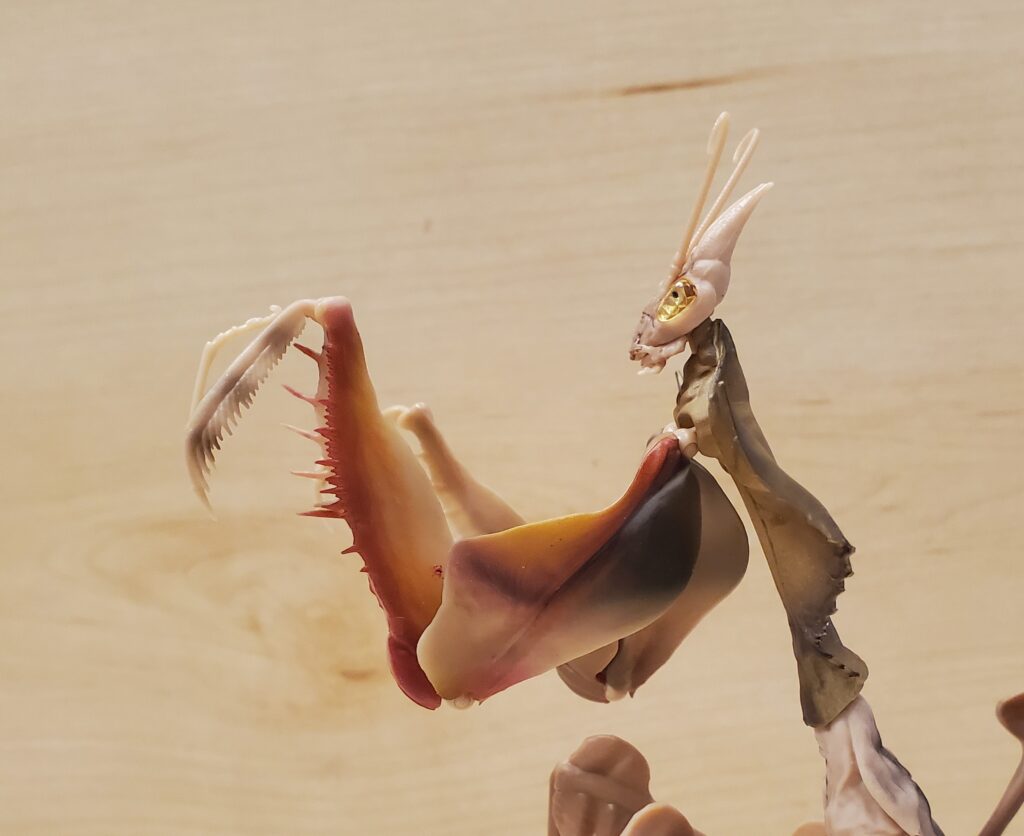

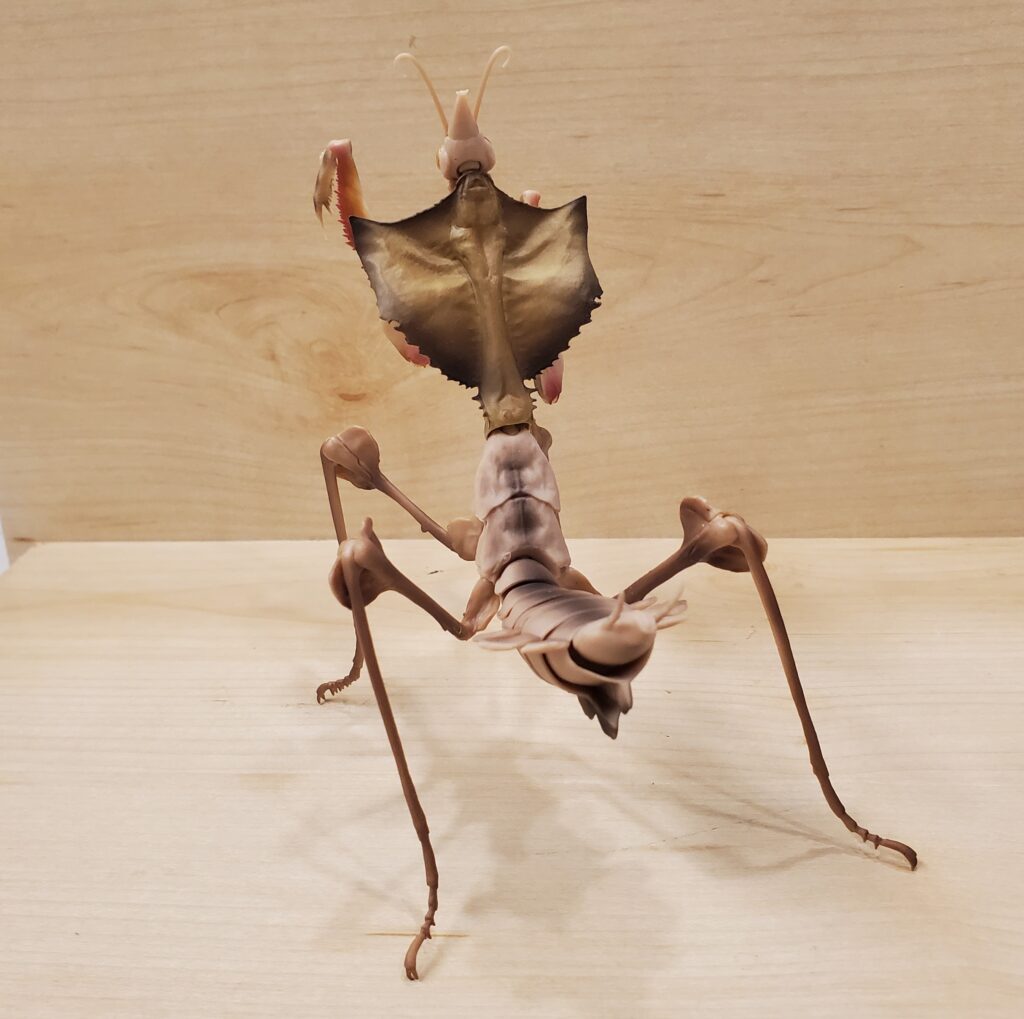

The two nymphs, in habitat:
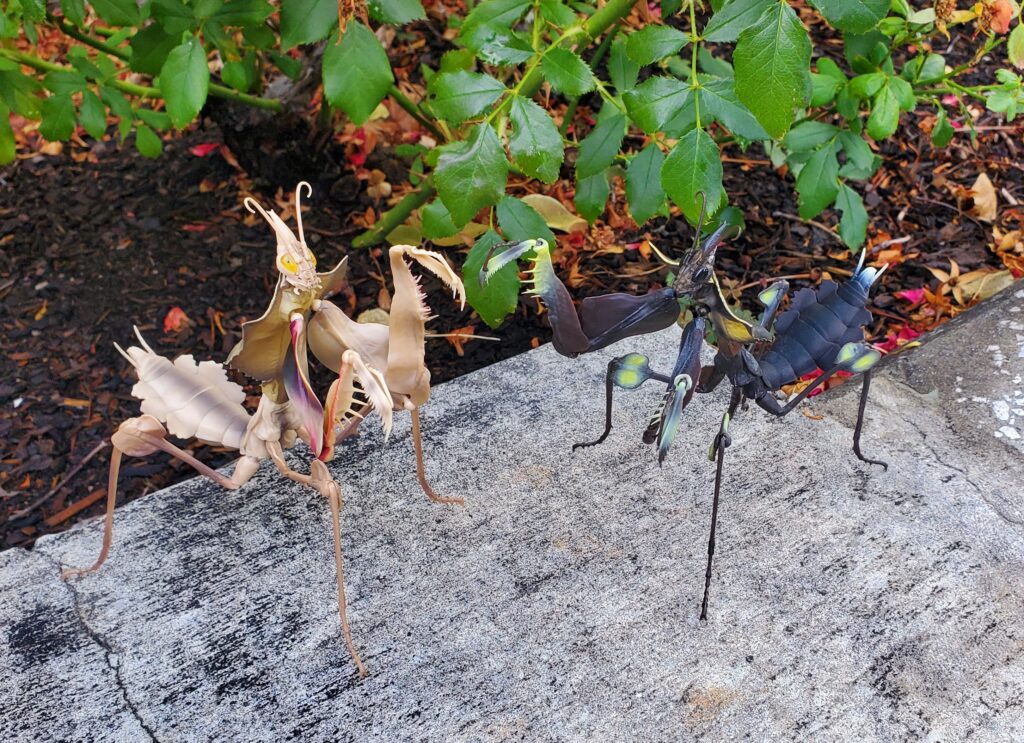
Lastly, let’s look at the Bandai Spirits adult. Unlike the nymphs, the adult does not require assembly and there are no points of articulation. The figure is displayed in a characteristic defensive posture, flashing its bright red and green underside, to scare away a would-be predator. The figure can stand on its own, but comes with an acrylic base to aid in support (which will probably help in the long run, as the weight of the body is likely to make the legs splay over time).
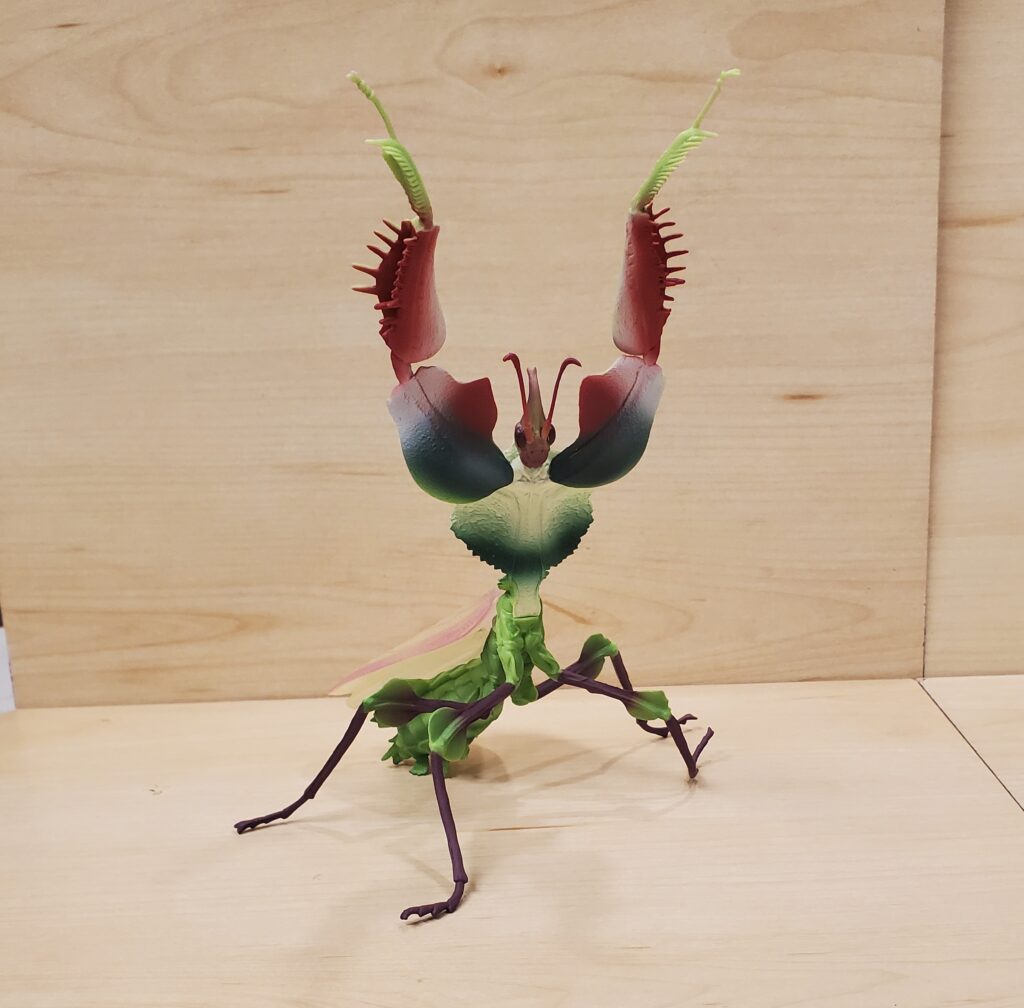

The figure stands a towering 19.0 cm tall with a body length of approximately 13.0 cm, putting it in 1:1 scale for a large adult female (and we know it’s a female based on the length of the antennae). Bandai Spirits insects to date have all been in the 1:1 scale range, albeit on the larger/maximum end of the range.

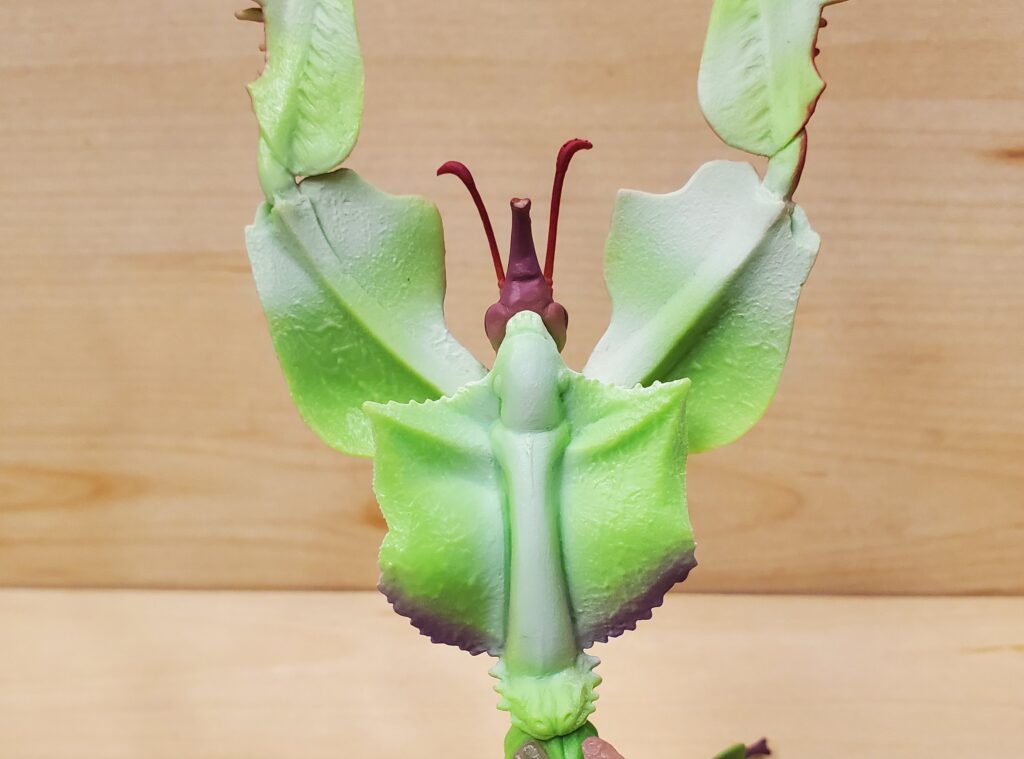
Most of the body appears to be one piece, except for the wings which are of a translucent PVC that have been permanently affixed to the main body.
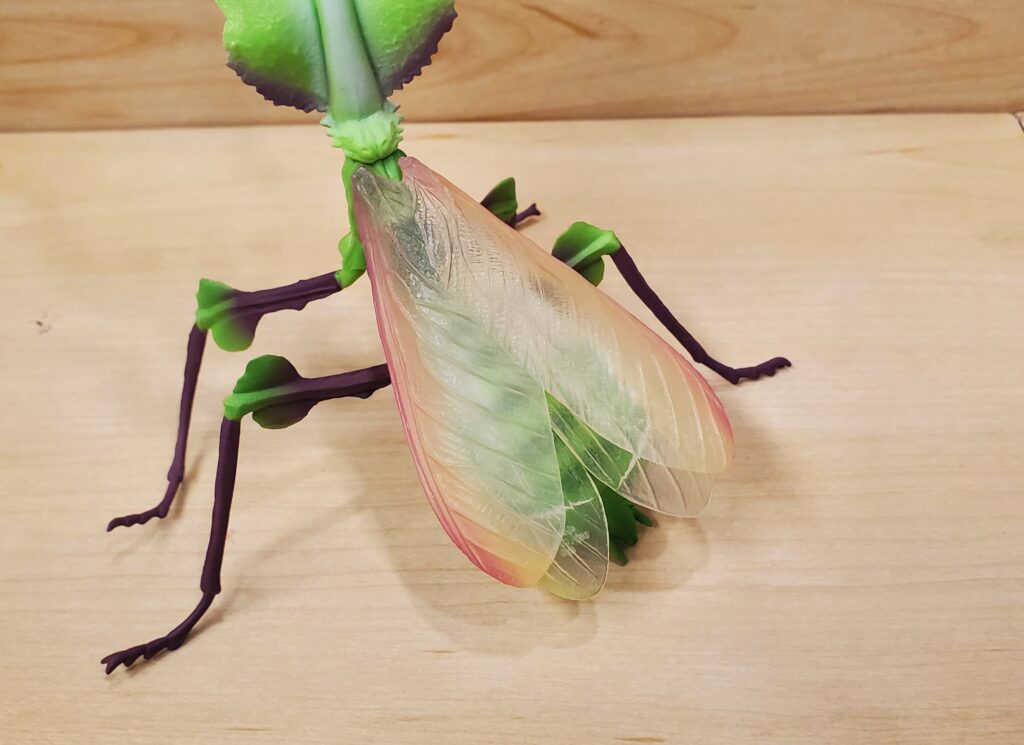
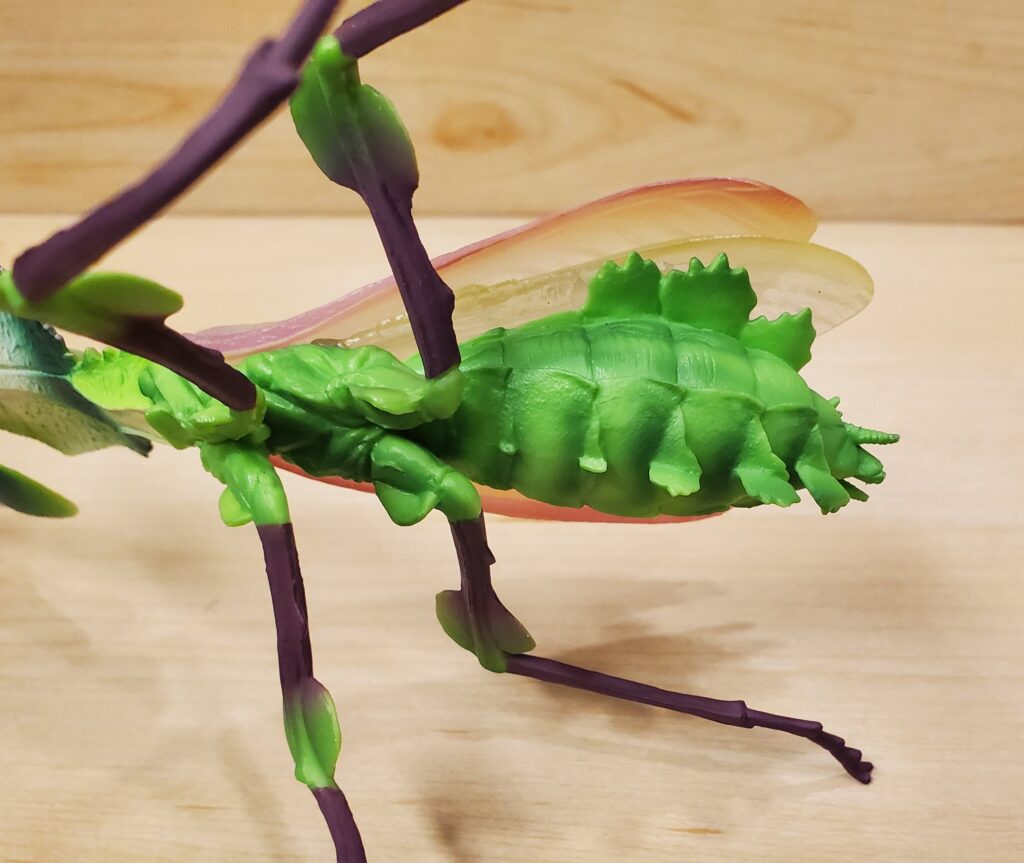
The paint job is well done and carefully applied. Much of the body is various shades of green, with the legs terminating in a purple-red and pink-to-red highlights on the forelegs and wings. I believe the figure was re-released with a brown base color as well.
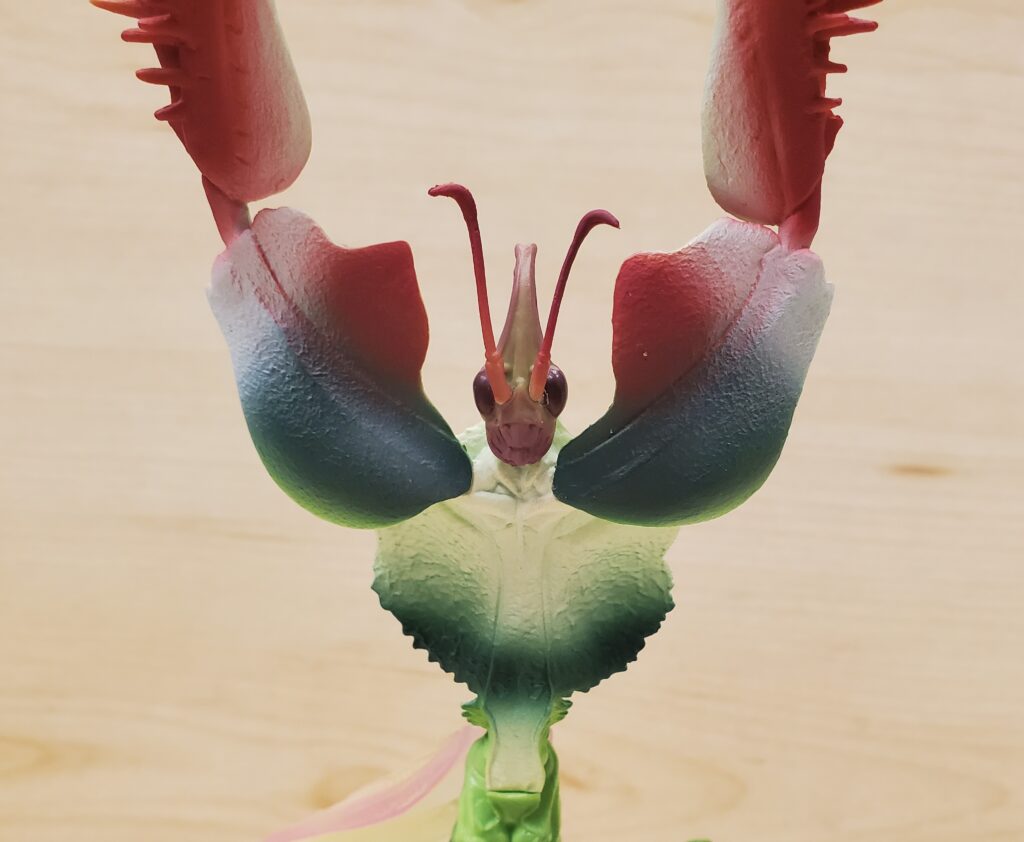
I haven’t seen the two Bandai Diversity adults in-hand, so I cannot compare them, but according to forum member Beetle guy, they are more detailed and better painted than this one by Bandai Spirits. Still, it serves my purpose well, and I like the lack of assembly and articulations. I tolerate assembly and articulations for good arthropod figures and unique species of most any taxa, but I do try to avoid them when possible. Also, the Bandai Diversity adults have the ability to be displayed with the wings open as if in flight.
The adult in habitat:
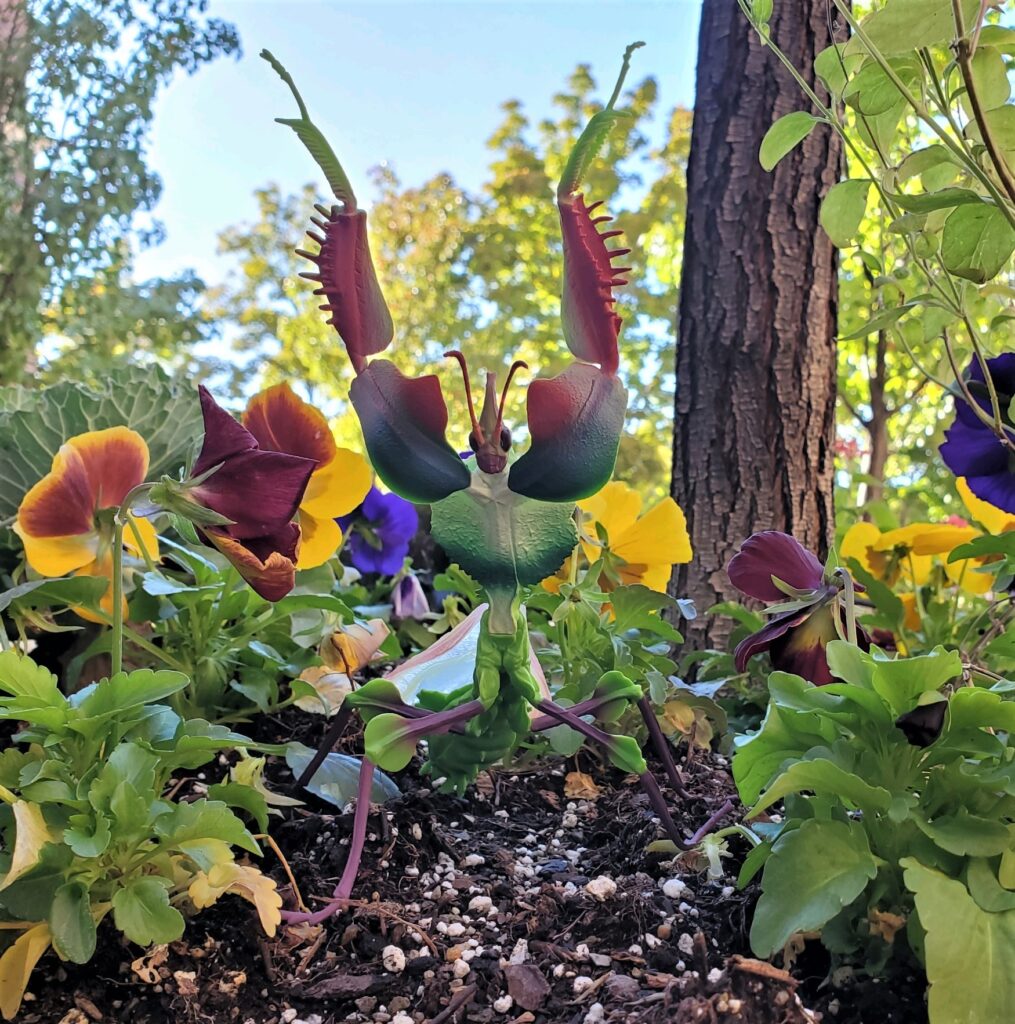
While I would normally recommend these figures to collectors of interesting taxa, I could understand if their size, expense, the required assembly and articulations of the Bandai figures, and the possibility of having to ship from Asia, might not make them desirable for most general collectors. The Bandai Spirits figure can be particularly difficult to find at times, as (if I remember correctly) it was sold in one grocery store chain in Japan and sold out quickly. At the time of this writing, a quick eBay search does show a couple available, however. But generally, Bandai Spirits figures are not always easy to come by. Well, I hope you enjoyed my first ‘spooky’ October blog review! I have at least two more planned for the month! Stay tuned!
#AnimalToyBlog
Disclaimer: links to Ebay and Amazon on the AnimalToyBlog are affiliate links, so we make a small commission if you use them. Thanks for supporting us!




Excellent! If they ever remake 1957’s The Giant Mantis they should use this species.
@blog Such delicate figures!
Remote Reply
Original Comment URL
Your Profile
Those are insanely good!